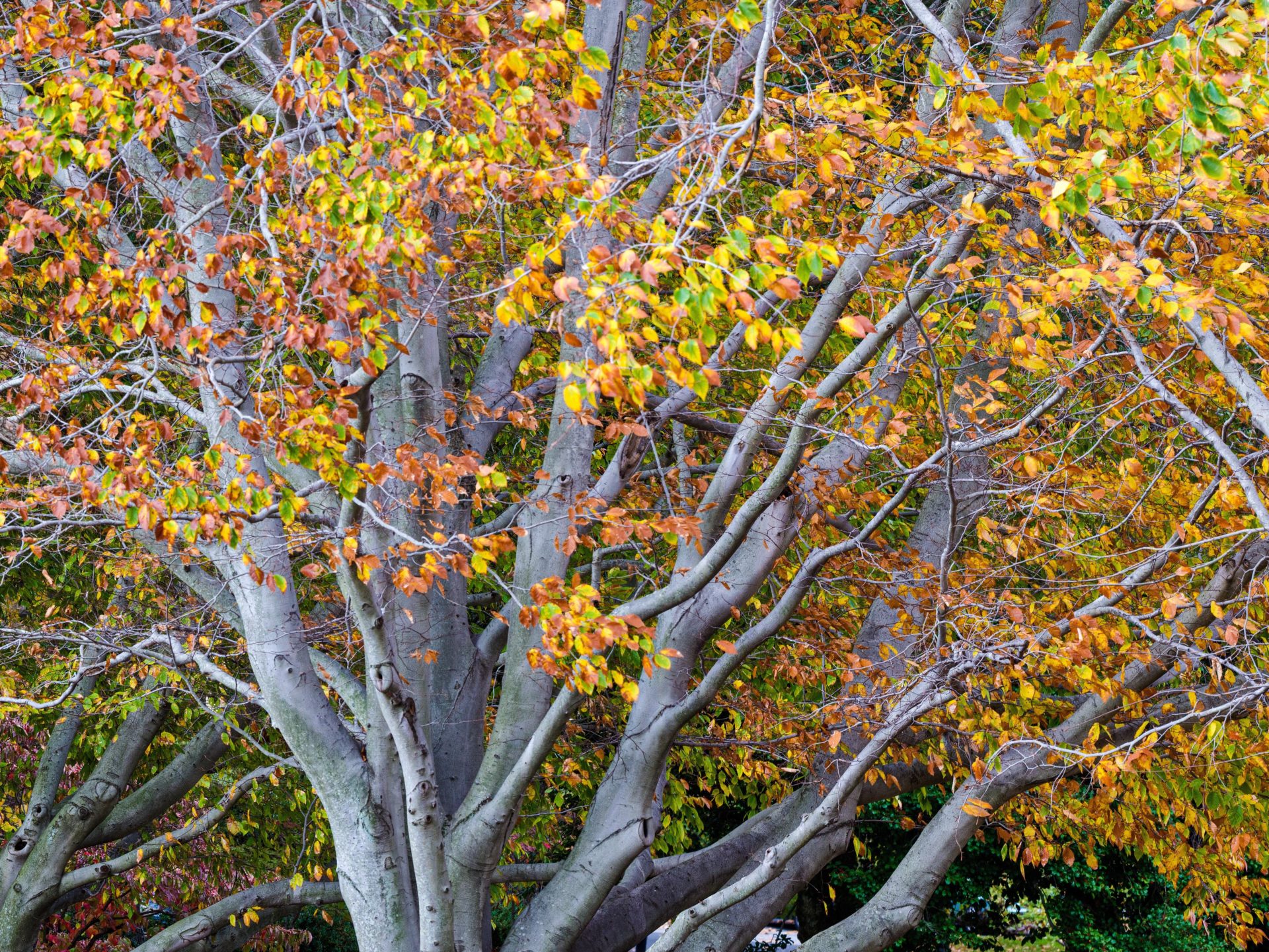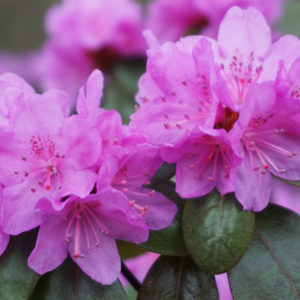Spring always brings to mind one of my favorite trees: beech. Not because it offers colorful blossoms to welcome the season, it doesn’t; but for the more subtle reason that, when backlit by sunlight, its young foliage shines with a radiance of new beginnings that is spring.
From slender, needle-shaped buds emerge oval, serrated leaves. These immature leaves are initially covered with downy hairs, which disappear as the leaves mature, harden and darken in color. From bright, chartreuse green in spring, through a rich, deep green in summer, the leaves of beech will turn yellow and russet in fall and ultimately linger as rusty brown throughout winter. And this is another reason that this tree appeals: young trees hold their foliage throughout winter, only falling it as its buds begin to break open. Beech has therefore been used as a hedging tree due to it offering privacy almost all year round, as clipped trees also retain this trait.
Its smooth, silver-gray bark also adds to its winter interest, and as it can live for 200-400 years, an individual tree makes a grand statement and develops large, surface roots from around its trunk, which sink into the ground like the hooves or claws of a huge mythical beast. However, it should be noted it is not a deep rooted tree, and requires a moist, but well draining soil to grow well.
There are native varieties of beech throughout a large part of the world. In the U.S. it is American beech, fagus grandifolia, which can be found in mixed hardwood forests from Nova Scotia south through eastern U.S. down to Florida. It is a very shade tolerant tree, able to thrive in the understory until a clearing appears allowing it to develop fully. Beech mature into large shade trees, whose canopy blocks a great deal of light, thus allowing only certain specialized plants to thrive below them. One such is Beechdrops (Epifagus virginiana), which draws on the beech’s roots as its food source. As a landscape specimen tree though, it does require a sunny location to achieve its full potential.
While beech can prevent a broad diversity of plant life if they dominate forests, they do offer benefits to wildlife. Mature trees offer shelter and nesting holes to a variety of birds and small mammals. The nuts of beech, known as beech mast, provide highly nutritious food for birds, rodents and even large mammals such as deer and bear.
They also provide habitat for various insects, including around 100 species of butterflies and moths, one of which is the rare Early Hairstreak butterfly, whose caterpillars only eat the leaves of American beech and beaked hazelnut. Due to the popularity of its foliage, it is for this reason that new leaves of the beech emerge with downy hairs – it is to give the tree chance to establish its food production source, before “sharing” it with hungry caterpillars! As a result of hosting so many insects, beech also hosts a food source for many birds.
In gardens it is more common to find European beech, fagus sylvatica. The most obvious difference is the smaller foliage, and more important to home gardeners, a less dense canopy. This means a greater variety of plants will thrive at the base of this tree. In fact, an iconic image of spring in ancient British woodlands is a carpet of English bluebells (hyacinoides scripta) blooming under the emerging foliage of beech and other deciduous trees.
The European beech also has a number of cultivars, which have increased its popularity as a garden specimen. So if you are intrigued by beech, but are looking for something a little different, some of the available varieties include:
Fagus sylvatica ‘Purpurea’ – copper beech. This purple leafed cultivar, which offers a pleasing contrast between its gray bark and deep purple foliage, turns a vibrant copper color in fall. It also comes in a weeping version, fagus sylivatica purpurea f. pendula, which due to its weeping habit is a more modest sized tree.
Fagus sylvatica ‘Purpurea Tricolor’ is a variegated beech, with purple foliage tinged with white and pink. Its variegated foliage means it will grow to a smaller size than common beech, and due to the coloration of its foliage will appreciate a partial rather than full sun location.
Fagus sylvatica ‘Dawyck Purple’ is a columnar cultivar, making it the perfect copper beech for smaller spaces.
Sources:
https://extension.unh.edu/blog/2019/08/looking-american-beech
https://www.gardenguides.com/100981-varieties-beech-trees.html








